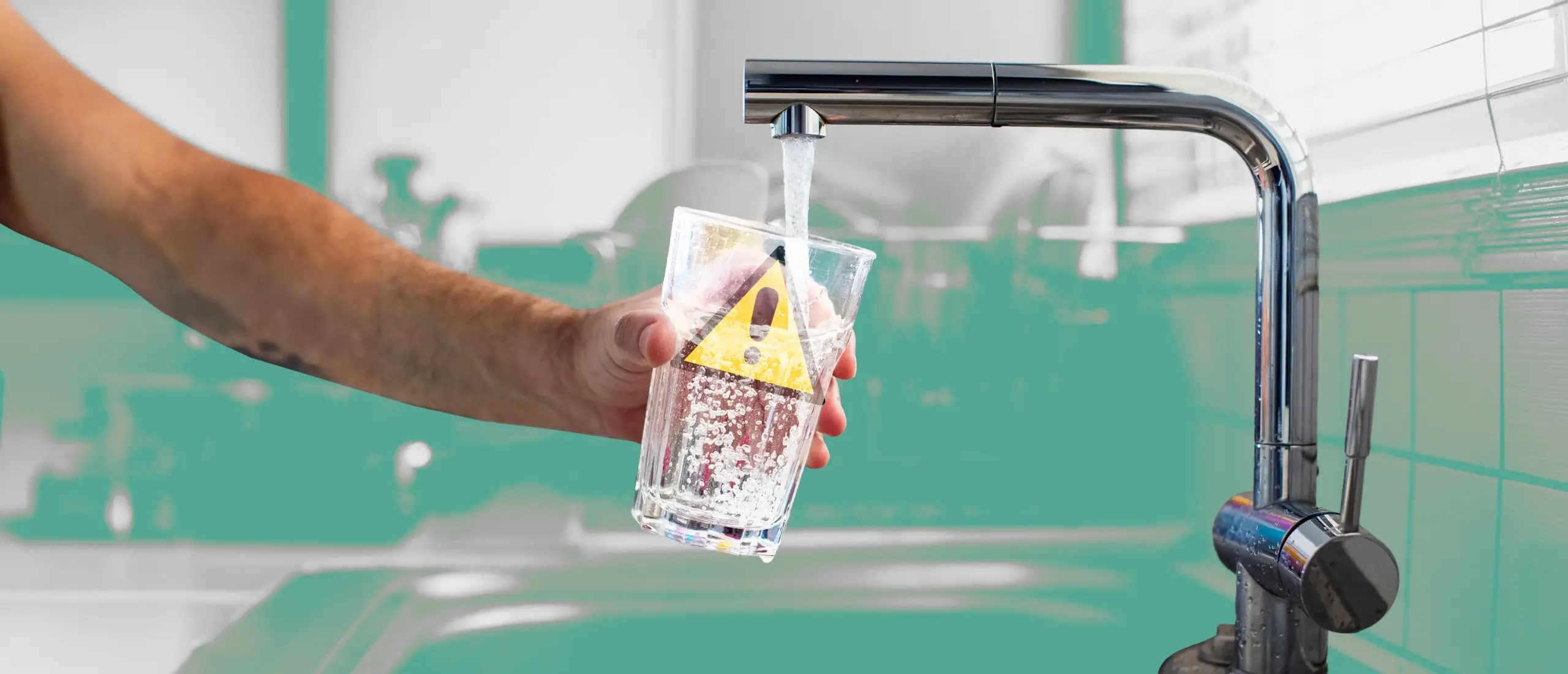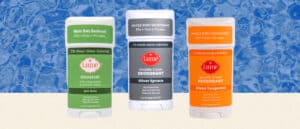Nearly Half of U.S. Tap Water Contains Life-Shortening PFAS. Here’s How To Filter Them Out of Your Water
If your body is a temple, you aren’t going to like this. At least 45 percent of the nation’s tap water could be contaminated with per- and poly-fluoroalkyl substances, otherwise known as PFAS, according to a new study by the U.S. Geological Survey (USGS) (1).
Sometimes called “forever chemicals,” PFAS are a family of thousands of manmade, synthetic chemicals that don’t break down easily in the environment or in your body. A number of PFAS such as PFOA and PFOS have been linked to serious health problems, including cancer, obesity, and hormone disruption (2).
PFAS are found in all sorts of places from non-stick cookware and sweat-resistant clothing to contaminated sources of food and drink (like sparkling water). Depending on where you live, however, your biggest exposure to PFAS is likely your water—shower water, drinking water, sink water, and so on—per the findings of the study.
There is good news, we swear. Thanks to the USGS study, which tested over 700 sources of tap water across the U.S., we now have a better picture of which cities have the biggest PFAS problems. In a hot spot? With the right water filter, it’s possible to rid your water of PFAS and other toxins. Here’s everything you need to know to ensure your next sip of water is squeaky clean.
What the USGC Study Found
While most state and federal programs typically measure exposure to PFAS and other chemicals at water treatment plants or the groundwater wells that supply them, “the USGS study specifically focused on collecting water directly from homeowners tap where exposure actually occurs,” Kelly Smalling, a USGS research chemist and lead author of the study explained to NPR.
The researchers collected samples from 716 residences, businesses, and drinking-water treatment plants from a range of public and private well supplies from rural and urban areas across the U.S. Per Smalling, PFAS were more prominent in urban areas, and comparable between public and well water.

“Results from this study indicate potential hotspots include the Great Plains, Great Lakes, Eastern Seaboard, and Central/Southern California regions,” Smalling said. USGS researchers estimate a 75 percent chance of PFAS exposure in urban areas and a 25 percent chance in rural areas.
Exactly how much PFAS were detected? For starters, it’s helpful to know that the U.S. Environmental Protection Agency (EPA) released an updated health advisory on PFAS in June 2022—which suggests limiting PFOA to 0.004 ppt and PFOS to 0.2 ppt to reduce adverse health effects. The USGS tested for 32 individual PFAS compounds, and said in a release that the EPA’s recent advisories for PFOS and PFOA “were exceeded in every sample in which they were detected in this study.”
Most drinking water isn’t up to the EPA’s health advisory, and it won’t be for a hot minute. The EPA finalized the first nationwide restriction on drinking water in April 2024—which is set to limit PFOA and PFOS to four ppt per chemical each, well above their 2022 health advisory. The EPA claims once fully implemented “the rule will prevent thousands of deaths and reduce tens of thousands of serious PFAS-attributable illnesses.”
But with the results from USGS, you can take action to protect yourself now.
How Bad Are PFAS, Really?
PFAS are linked to a wide array of health problems like altered immune and thyroid function, liver disease, kidney disease, birth defects, and lipid and insulin dysregulation. Not to mention kidney, liver, and testicular cancer (3).
Interestingly, men might retain higher levels of PFAS in their system than women (4). Emerging evidence suggests PFAS can interfere with male reproductive hormones, increasing the risk of infertility (5). Exposure to PFOA and PFOS (the two most common PFAS) is also associated with a decrease in total and free testosterone (6).
And even if PFAS isn’t found in your tap water, the potentially toxic chemicals have been detected in the blood of 98 percent of Americans (7). So it’s worth finding ways to cut down on your exposure—from wearing less sweat-wicking clothing to swapping out Teflon-based items in your kitchen like your beloved air fryer (boo).
Exposure to chemicals like PFAS is associated with low T. Hone’s hormone assessment is the simplest way to uncover whether your levels are low. It’s fast, simple, and you can do it from home.
How to Test Your Water for PFAS
Thanks to the USGS heat map, you can get a good idea if your tap water is a concern. That said, at a little over 700 locations the study wasn’t able to test for every city and township across the U.S. The Environmental Working Group, an advocacy nonprofit, has created a national tap water database searchable by zip code that provides a better picture of PFAS and other concerning chemicals local to you. They also have a national map that illustrates where PFAS has been detected in the US.
However, not all cities require water testing to the new stringent EPA standard of four ppt for PFOA and PFOS, as well as a string of other harmful PFAS. If you want to know exactly what you’re working with, you can test your water for PFAS by contacting a water testing lab local to you. Simply Google search “water test for PFAS.” There are also water filter brands—like Hydroviv—that specifically tailor their filters by zip code to ensure your filtration system is actually clearing out the stuff that’s lurking in your local water.
How to Remove PFAS From Water
In a PFAS hotspot? Get a water filter. You can completely rid your water of PFAS, so long as you have the right setup. The NSF—the gold standard for water purification—has a list of recommended filters.
In general, reverse osmosis and activated carbon-based filters are your best bet for removing PFAS. Reverse osmosis filters are a bit more pricey (typically around $200) but more effective and consistent when it comes to filtering PFAS. Bonus: Both options remove a large number of other contaminants like heavy metals and waterborne pathogens and viruses.
Clean up your drinking water first, either with a fridge filter like the Hydroviv, an under-sink filter also from Hydroviv, a filtered pitcher like this Epic Nano Pitcher, or a whole house system like this intense Springwell C1.
Do you need to filter your whole house from PFAS? Maybe. Mouse and in vitro studies suggest that PFAS can be absorbed through skin contact (8). Although, research confirming skin uptake of PFAS in humans is still lacking (9). If you prefer peace of mind, a whole house filter might be worth the investment.
Does a Brita Filter Remove PFAS?
Not necessarily. Brita filters weren’t designed—and do not claim—to remove PFAS. However, they do use activated carbon as well as an ion exchange treatment, two processes the EPA recommends for removing PFAS. If you already have a Brita and don’t want to invest in an entire new filtration process, consider subbing the filter in your Brita for a Cyclopure Purefast filter—the cartridge is compatible with a Brita filter and designed to filter out PFAS.














